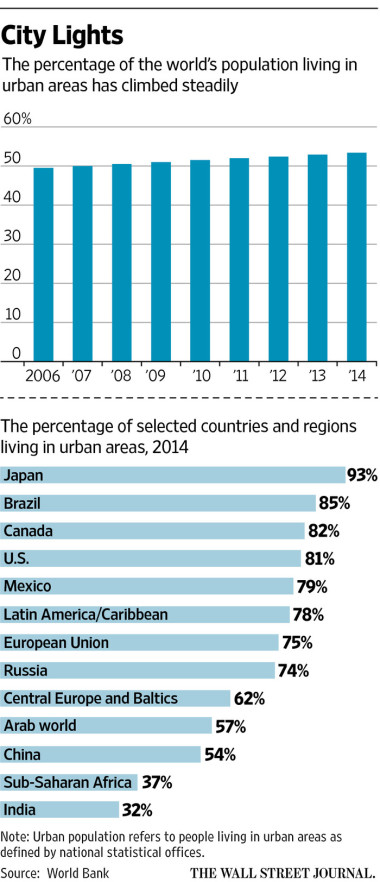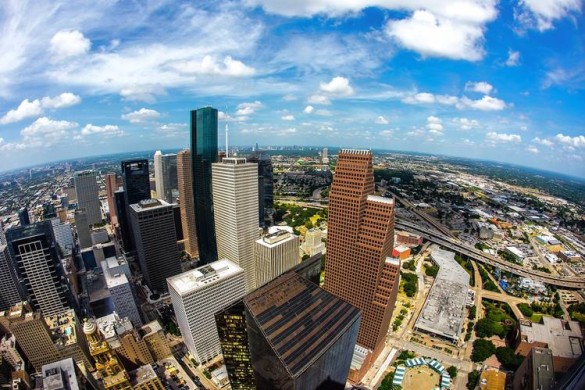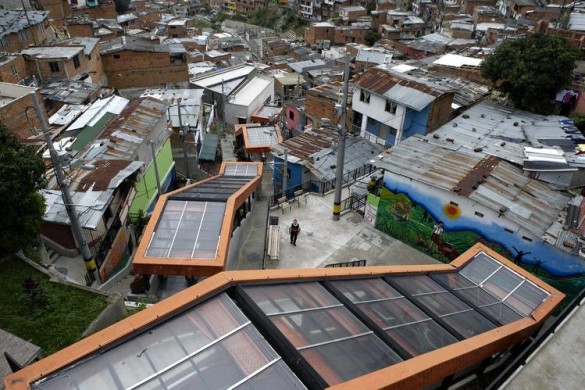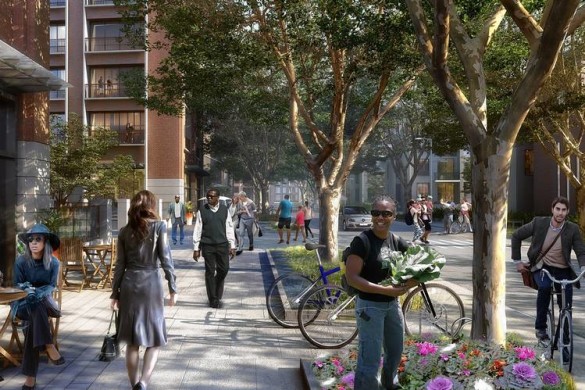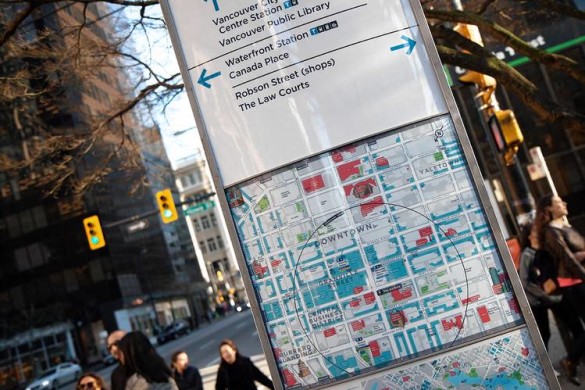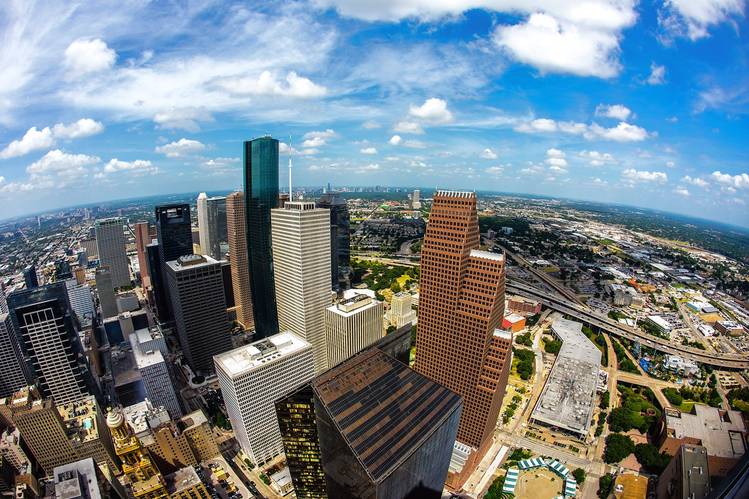
Five Cities That Are Leading the Way in Urban Innovation
Source: www.wsj.com
In an era of urbanization, Singapore, Houston and Medellín, Colombia, are among those redefining what cities can be
Cities are the future.
In 2008, for the first time in history, more human beings lived in cities than in rural areas. The United Nations projects that by 2050 nearly two-thirds of the world’s projected 9.7 billion people will be urban.
Some urban planners scratch their heads about how it’s all going to work. As ever-denser, more populous cityscapes continue to emerge, the eternal struggle to balance growth and quality of life shows few signs of abating.
Yet some ideas that address these types of problems are in place already and gaining traction in a handful of cities, including a few that are right under our noses.
To find out what urban-development policies and experiments currently hold the most promise, we asked more than a dozen experts—urbanists, architects, planners—what cities they think are worth watching now.
Their choices were illuminating. While the world’s megacities—Tokyo, Jakarta, Shanghai, New York City—get a lot of attention, for the most part the experts we asked picked cities a tier or two lower in size. None of the cities they highlighted, they thought, were doing everything right. But in all cases, the cities are taking some actions that the experts say demand our attention.
The five we ended up with aren’t meant to be exclusive. A larger list could have included London, considered by many to be the world’s most dynamic city, despite increasingly unaffordable housing. Seoul and Amsterdam, meanwhile, are among the leaders in putting “smart city” tools into the hands of their citizens.
With that in mind, here are five innovative cities that are worth watching.
SINGAPORE: Managing extremely limited resources
Most experts agree: In many ways, Singapore is a model of a successful, 21st-century city. It fosters business, promotes education and maintains a government largely free of corruption, though it also places strict bounds on personal behavior. But what deserves the most attention is how it manages its severely limited resources, a situation that cities around the globe will increasingly face.
The island city-state depends on neighboring Malaysia for much of its water. It imports 90% of its food and relies in part on a large group of non-permanent residents—about 30% of the population—to maintain economic growth. It also has to find ways to house its 5.5 million inhabitants, while keeping traffic moving in a dense yet bustling city that covers roughly the same area as New York City.
Singapore is “a city innovating under constraint,” says Edward Glaeser, a professor of economics at Harvard University. “You have a limited amount of land—you have to make sure you’re not wasting it.”
Take traffic. The city was a pioneer in “congestion pricing,” charging motorists for driving into the central business district during morning rush hour. A quota system restricts the number of new registered vehicles. Going forward, the city wants to require all vehicles to have a satellite-linked device that can calculate exact driving distances and make it possible to adjust tolls depending on traffic and the time of day.
Then there is water. The growing need for clean water will be among the biggest challenges this century, and Singapore is trying to squeeze more use from limited supplies. Two desalination plants can produce about 100 million gallons a day from seawater, about a quarter of the city’s needs. Singapore also looks to the sky: About two-thirds of the land surface funnels rainwater to be treated for drinking, and high-rises use it for flushing toilets. Changi Airport—frequently ranked among the world’s best—collects rainfall from runways to water the plants in the airport nursery and irrigate outdoor landscaping.
Singapore also has one of the world’s most ambitious wastewater-reuse systems. Four water plants using advanced-membrane filters and ultraviolet light as a disinfectant produce water that Singapore’s public-water authority says is clean enough to drink. However, the recycled water is mainly used for air-conditioning and for industry, including semiconductor plants that require water even purer than drinking water.
HOUSTON: Thriving but affordable
Many successful cities—most notably, London and San Francisco—have a glitch in their operating systems: Though they are growing rapidly, too many people are finding they can’t afford to live there.
Not Houston. From 2010 to 2014, the Texas city added more than 140,000 people, a 6.7% increase and second only to New York in the U.S. But the difference between Houston and other high-growth cities is that it has expanded its housing stock to accommodate its new residents. In roughly the same period, the Houston metro area issued construction permits for 189,634 new units, the most in the nation. It is not surprising, then, that more than 60% of homes in the larger Houston metro area are considered affordable for median-income families, according to the National Home Builders Association, compared with about 15% in the Los Angeles area.
Houston has “shown a capacity to grow without the kind of massive real-estate inflation that makes settling into places like New York, San Francisco, Boston, as well as London, all but impossible for middle-class families,” says Joel Kotkin, a fellow in urban studies at Chapman University in Orange, Calif., and executive director of the Houston-based Center for Opportunity Urbanism.
Many factors contributed to the recent growth spurt: Houston is the hub of the recently booming oil industry, which is now going through a painful bust. It boasts a nationally recognized medical center and is home to a thriving port. But affordable housing also contributed, Mr. Kotkin and others say, thanks to pro-growth policies and a light regulatory touch, especially the lack of traditional zoning.
No zoning makes it easier and faster to build, especially in response to changing economic conditions. A developer can avoid a lengthy and expensive rezoning process to build a townhome complex in a declining neighborhood of aging single-family homes. It might have to upgrade sewer lines and streets, but development costs are still low compared with other places. Although prices have risen some as builders replace older homes with nicer housing, the city stays affordable because so many new homes can quickly come on the market to keep up with demand.
The lack of zoning “actually does give the developer and design communities the ability to do things unlike anywhere else,” says Tim Cisneros, a Houston architect.
Says Mr. Kotkin: “While many on the ocean coasts yearn to restore the 19th-century city, the Texas cities are creating a template for this century.”
MEDELLÍN, COLOMBIA: Making high-profile investments in poor districts
Like many struggling cities, Medellín has looked to eye-catching building projects to revive its fortunes. What makes this Andean city different, however, is that it has placed some of its highest-profile projects in some of its poorest and previously crime-ridden neighborhoods.
Known to many as Pablo Escobar’s drug-and-murder capital of the 1980s, Medellín has undertaken a series of modernizations, such as a public-transit gondola system, the Metrocable, which serves poor mountainside neighborhoods surrounding the city. Striking new public buildings include the Spain Library, a group of giant stone-like monoliths overlooking a quarter once infamous for drug violence.
Perhaps the most ambitious project has been a system of outdoor escalators built in one of the city’s poorest districts. The escalators, which extend about a quarter-mile up steep hills and feature several small plazas, have won international innovation prizes. Tourism has grown, and the projects bring visitors to neighborhoods they might otherwise avoid.
It is still too early to know whether such expensive investments—the escalators cost about $6.7 million to build—will do much to improve the economic lives of those in poor neighborhoods. But they have done much to reconnect severely disadvantaged areas, which helps the whole city, says Michael Mehaffy, executive director of the Portland, Ore.-based Sustasis Foundation, a research and education foundation focused on neighborhood development. “It is in everyone’s economic interest to ensure that the poorer parts of the city are improving as well,” Mr. Mehaffy says.
DETROIT: Reducing red tape for neighborhood redevelopment
Detroit, which emerged from bankruptcy in 2014, doesn’t have a lot of money for revitalizing all of its neglected areas. So it is trying something more radical: setting aside areas where normal development rules don’t apply.
Developers and designers complain that, like many cities, Detroit’s onerous and outdated rules make it too difficult to rebuild or repurpose long-neglected retail areas. To try to reduce those obstacles without a time-consuming and expensive rezoning process, the city is proposing a handful of “pink zones,” where red tape will be cut to help small developers and entrepreneurs open new businesses and revive aging commercial strips. The goal is not to eliminate zoning but to ease some of the constraints faced by new projects, like minimum-parking requirements or environmental-impact reports.
With a $75,000 grant from the John S. and James L. Knight Foundation, the city planning department intends to recruit designers and planners to come up with a general framework for anyone who wants to start a new business or build in those areas. This might include pre-approved plans that can be used by builders to speed up a new development.
“You can create a great place, and you won’t have to go through months of red tape,” says Maurice Cox, Detroit’s planning director.
The idea of pink zones has been rumbling around planning circles for a few years. In the U.K., where it is called pink planning, it mainly aims to remove obstacles to new residential developments. It is part of a larger effort called “lean urbanism” that aims to reduce the regulatory tangle that can hinder new business.
Andrés Duany, a planner and architect who in the 1980s helped popularize the New Urbanism idea of walkable neighborhoods with a mix of housing, jobs and retail, is a leading U.S. proponent of lean urbanism. He says the idea came from all the young entrepreneurs and artists who in recent years were drawn to Detroit by cheap housing and space for launching new ventures. Detroit’s recent bankruptcy made that possible, he says, because the city wasn’t able to enforce its development rules and hinder the pioneering newcomers.
Detroit’s pink zones pilot program is the first test of this idea and is expected to serve as model for efforts to spur small redevelopment projects in other cities. “The city is ripe, the time is ripe,” says Douglas Kelbaugh, a professor of architecture and urban planning at the University of Michigan.
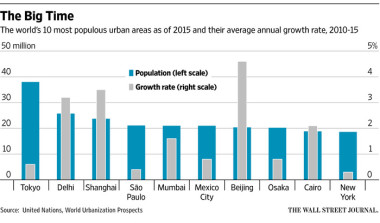
VANCOUVER, BRITISH COLUMBIA: Improving walkability
Everyone knows walking is good for you. Vancouver wants to make it the top transportation priority.
The Canadian city may not be the most walkable city in the world, though it regularly makes the top 10. What makes it noteworthy are all the ways it is working to make the city easier, safer and more enjoyable to get around by foot.
Vancouver has made walking a key part of its public-health and “green city” goals. Roadways are being built and redesigned to favor pedestrians, for example, by installing pedestrian-controlled traffic signals on busy streets.
It also has changed development codes to make streets more attractive to walkers. The city’s zoning rules encourage density, which places more destinations within walking distance. Downtown buildings have storefronts and restaurants on the street level, while residential neighborhoods feature townhouses with raised porches.
“It is a big selling point,” says Lon LaClaire, the city’s acting transportation director. “People want to have good experiences walking around the city.”
The efforts are paying off. Residents walk exclusively for 26% of all trips within the city; the number is higher for those who live downtown, Mr. LaClaire says. Vehicle trips have declined citywide over the past 15 years, he adds, and the number of cars entering downtown has dropped 20% since 1996. As a result, Vancouver is ranked fifth by Walk Score, a unit of Redfin, which measures the walkability of more than 140 North American cities.


